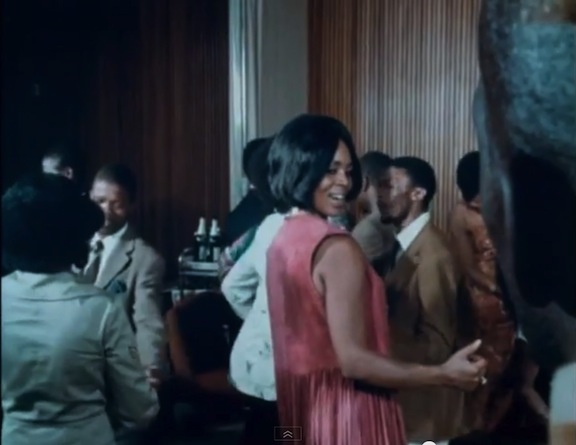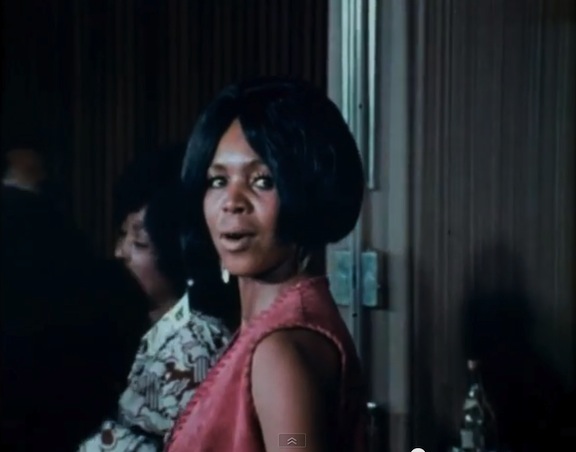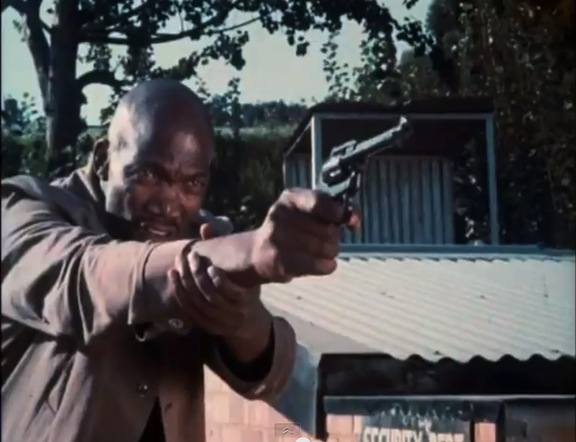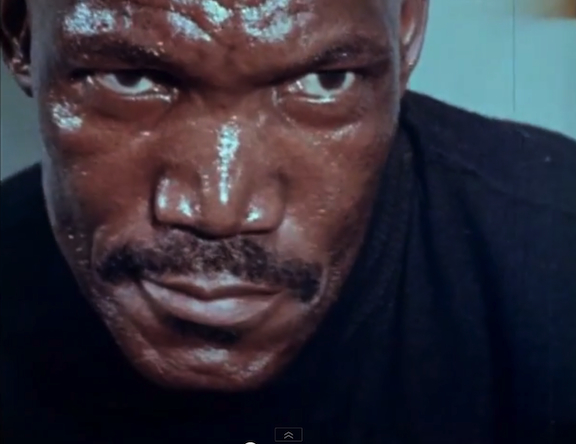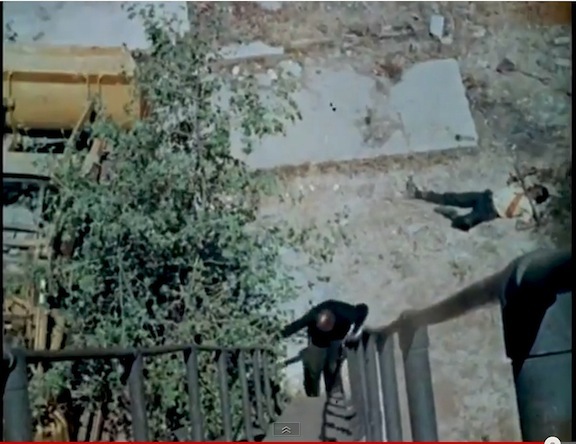A Scheme that Made Film Flourish Amidst Apartheid
A Cape Town production company is reviving a surprising flourishing of filmmaking featuring black actors and African languages in 1980s apartheid-era South Africa
n
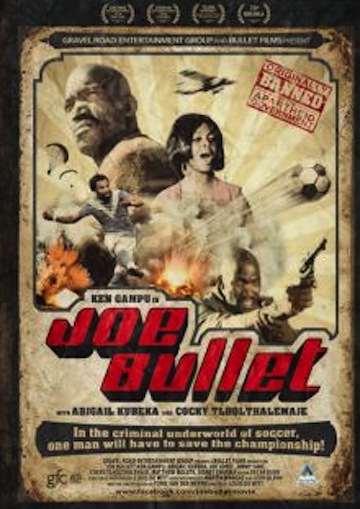 Apartheid South Africa created many means of attempting to control the country’s oppressed majority — anyone not “white.”
Apartheid South Africa created many means of attempting to control the country’s oppressed majority — anyone not “white.”
In 1972, some filmmakers and bureaucrats came up with the bright idea of mollifying the masses with movies.
They devised a “B-Scheme” of film production that led to the creation of some unlikely variants of genres that had proven popular in other countries, particularly the United States. A favorite type was the inherently politically charged “Blaxploitation” action melodrama.
By 1990, some 1,500 B-Scheme feature films were made in the increasingly troubled country, among them black-cowboy films and buddy-cop movies, all on small budgets.
“It’s inspiring to see how much they did with how little they had,” says film producer Benjamin Cowley. He has undertaken to find as many of the films as possible, to safeguard them for posterity through restoration, and to re-release those that seem likely to find a market.
His project of reclamation of “B-Scheme” cinema, Retro Afrika Bioscope, is part of his work as the director of three-year-old, Cape Town-based Gravel Road Entertainment Group, which is both a film-production company and apparently the only film-restoration facility in the Southern Hemisphere.
The B-Scheme film-subsidy program was a let-them-eat-escapist-film policy directed at the country’s majority non-white audiences. Government funders hoped it would distract enough people that resistance would abate to the regime’s pervasive and brutal suppression.
In another sense, it was a counterpart to the subsidy scheme that white South African filmmakers working in English or Afrikaans had enjoyed since 1956 – the “A-Scheme.”
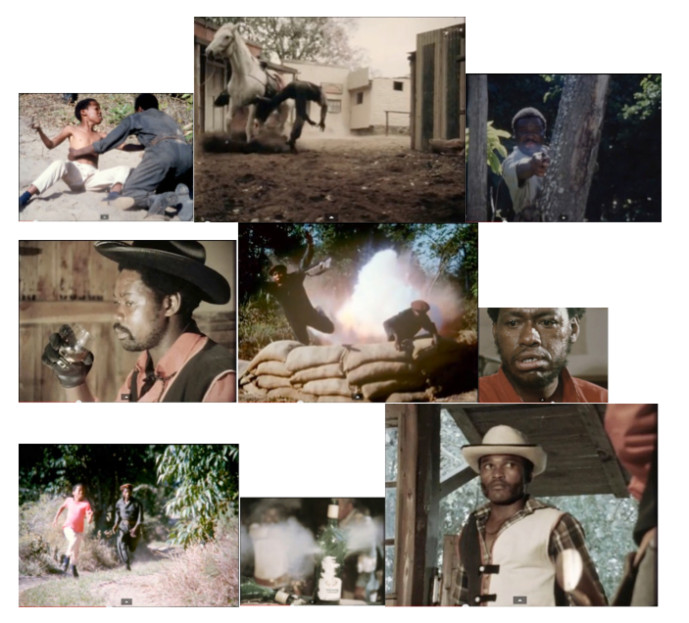
The varied output of the B-Scheme
w
a large and varied output
Cowley says he is continually surprised by the productivity of the B-Scheme makers as they made westerns, buddy-cop movies, comedies, creature features, and much else, in Zulu (isiZulu) and other languages: “We pretty much had Nollywood before there was Nollywood.” At one point, the B-Scheme was producing as many features as Hollywood.
Cowley and his colleagues have their work cut out for them, finding it all. When their search began, “absolutely nothing was available,” he says. Little by little they turned up material in private collections and the homes, attics, and garages of original producers, who in many cases weren’t easy to find, either. “Typically it had not been kept in the best of conditions; typically it was in quite a bad state,” Cowley says.

Benjamin Cowley; photo: Patrick Ryan
Already, Gravel Road has worked on well over 150 films, with a goal of acquiring rights for, and restoring, hundreds more within a short while. It has been releasing the material on a variety of media. The project has sourced many films in national archives, thanks to the Legal Deposit Act that came into force in 1997, several years after the scheme ended in 1990. But even prints from that repository have left something to be desired, Cowley says: “The archives tried their best with whatever resources they had to catalog and file properly, but the general condition of films we get from the archives is not good. That’s not the fault of the archives. The films that were deposited came from the rural networks, and they came in dirty. Films and negatives had not been wrapped in plastic once they were put in cans.” Resources for repair were few. “Now, when they go back for long-term storage, hopefully we’ve added on another 100 years to their lives,” says Cowley.
Restoration and preservation generally entails two to four weeks of work for his company. Joe Bullet, directed in 1973 by Louis de Witt, and with an all-black African cast including Ken Gampu in the title role, has been the outlier, requiring 14 weeks of work — with impressive results.
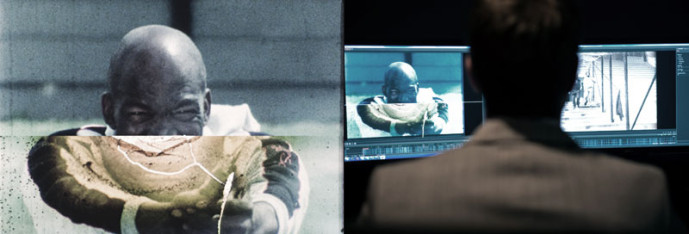
To produce clean digital master copies, specialists use tailored software to go frame by frame through aging film. They remove scratches, dust, splice marks, sparkle, picture noise, and other imperfections.
Considered South Africa’s first Blaxploitation flick, and one of the first South African films with an all-African cast, Joe Bullet draws from the 1971 American hit, Shaft, which a renowned photographer of black America, Gordon Parks, directed, and which alerted Hollywood to an untapped niche market.
In Joe Bullet, the hero takes on corruption in a soccer league. He battles villains, escapes booby-traps, and karate-wallops anything nasty. The movie borrowed not only from Blaxploitation, but also from British spy thrillers: Like James Bond and his ilk, Bullet wins the day with his wits and weapons, and dazzles women along the way.
In July 2014, Gravel Road’s restoration of the film premiered at the Durban International Film Festival, although it had screened a few months earlier on national television along with other films by its writer and producer, Tonie Van Der Merwe.
At the Durban festival, Van Der Merwe received a lifetime-achievement award for having made some 400 indigenous-language films during the 1970s and 1980s. After realizing that showing movies was a good way to entertain his 200 workers, he had launched into film production using machinery and props from his own factory — once you know that,Joe Bullet’s sometimes hokey but always fully committed action scenes become all the more enjoyable.
Van Der Merwe helped formulate the B-Scheme plan, earning himself a reputation among black liberationists as an apologist for white-dominated rule. Still, Van Der Merwe and others are credited not only with depicting the lives of black South Africans, and providing heroes for an oppressed population, but also with launching the careers of some black actors, technicians, and production hands.
Scenes from Joe Bullet
The admiration for Joe Bullet was a far cry from the film’s initial reception by South African authorities. They banned it after two screenings at the fabled Eyethu cinema in Soweto. Forty years later, previewing in 2015 its first showing in 40 years, a Johannesburg newspaper describes it as “an innocuous tale of the kidnapping of two soccer players and their subsequent rescue by all-around badass Ken Gampu” that was “too much for the apartheid censors, mainly because its hero was black, and he carried a gun and kicked ass.”
Van Der Merwe had channeled the indignation that had made Shaft so popular with African-American audiences, just as Melvin Van Peebles’s 1971 Sweet Sweetback’s Baadasssss Song had been. Van Peebles financed that film himself, largely, and was rewarded with a box-office gross of over $15-million.
In South Africa, attendance at B-Scheme movies was enthusiastic, but market benefits decidedly more modest. Still, some actors and production staff found a way forward through the B-movie scheme. Among graduates was Abigail Kubeka, now in her 70s. She played a nightclub singer with whom Joe Bullet bonded, and went on to a successful career in entertainment, including in jazz and opera.
film in the building of the apartheid state
Film exhibition has had as long a history in South Africa as anywhere, dating from the late 19th century, and contributed to the design of the colonial apartheid state, according to Gairoonisa Paleker. Now a film historian at the University of Pretoria, in her doctoral thesis submitted at the University of Cape Town in 2009 she cited Jacqueline Maingard, who in South African National Cinema (Routledge, 2007) wrote that “the early development of cinema in South Africa is inextricably linked to the ‘building of white identity’ within a national paradigm especially from 1910 onwards when South Africa attained Union status. The articulation of a national identity and what constituted nationhood, through the medium of film, was later closely linked to Afrikaner nationalist aspirations which received state support from 1948 onwards when the National Party came into power.”
The way that even film making by black South Africans was coopted into this nation-building project had been little studied when Paleker completed her dissertation. She wrote that the question of who was making the B-Scheme films and for whom, and with what implicit or explicit claims to represent black culture and identities in South Africa, was naturally a sensitive matter: “Africans had very little opportunity or power to represent themselves and where this had been possible, it was within the ideological and political boundaries set by the apartheid government.”

Gravel Road’s Waterfront Film Studio, Cape Town
She viewed the B-Scheme in a broad context of colonial and post-colonial dalliance in film for indigenous audiences: “The state – whether colonial, segregationist, or apartheid – has played an important interventionist role in the development of a ‘black film industry’ and film viewing culture among Africans.” That intrusion, guided and informed by political exigencies from the 1950s right through to 1990, had slowed “the organic emergence of an indigenous African film industry and film culture,” she argued. And, she believed, given white political, economic, and social power — “the unique racial segregation of South African society and the oppressive nature of apartheid rule” — black South Africa had mounted little opposition to the “cultural manipulation.”
Her contention is in a sense surprising, because the stipulations of the B-Scheme included that three quarters of dialogue had to be in an African language and that 75 percent of actors had to be African. Producers were not required to submit scripts to the government’s Censor Board in advance of filming, but completed films were subject to government censure, and the Board viewed African audiences as comparable with “children or in some cases the feeble-minded,” in Paleker’s view.
Here, ironies abound. The apartheid regime approved the B-Scheme in the first place to ward off “the ills of modernity” particularly any that would inspire black Africans to challenge the hierarchical structure and “power dynamics of colonial settler society,” Paleker noted. The authorities were convinced of their own “colonial paternalistic discourse which sought to not only preserve African cultural traditions but also maintain the ‘child-like’ innocence of ‘natives’.”
Colonial rulers and settlers “believed that films, especially those representing criminal violence, gangsterism, and general crime, were a bad influence on the morals of Africans. This was linked to the idea that Africans were not sophisticated enough to adapt to modernity without imbibing the evils that came with modernity.” American film heroes, in particular, posed this threat.
That went hand in hand with the scheme’s funders preventive motivation: “Explicitly linked to this concern for the preservation of African culture and morality was the fear that negative cinematic portrayals of Europeans would lead to Africans losing their respect for and awe of Europeans.”
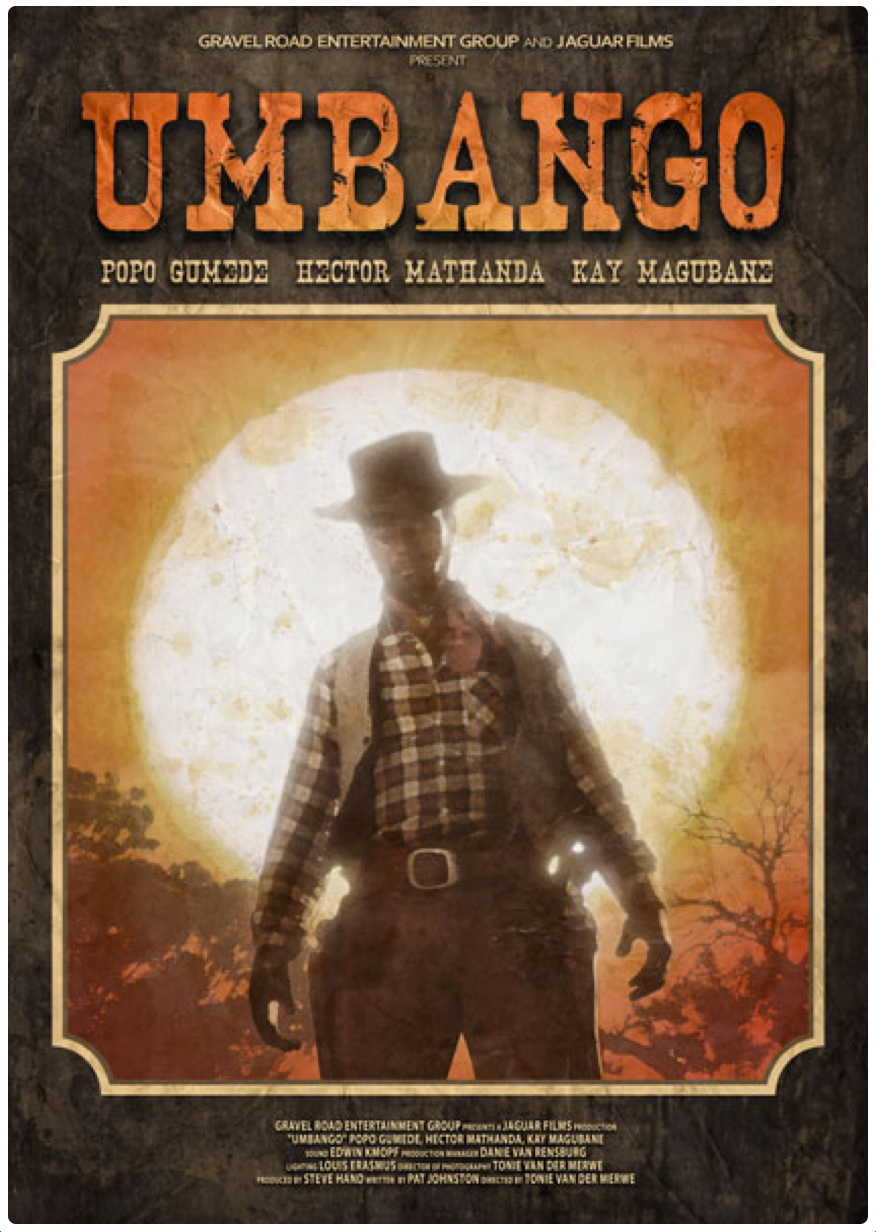 Colonial rulers and settlers “believed that films, especially those representing criminal violence, gangsterism, and general crime, were a bad influence on the morals of Africans. This was linked to the idea that Africans were not sophisticated enough to adapt to modernity without imbibing the evils that came with modernity.” American film heroes, in particular, posed this threat.
Colonial rulers and settlers “believed that films, especially those representing criminal violence, gangsterism, and general crime, were a bad influence on the morals of Africans. This was linked to the idea that Africans were not sophisticated enough to adapt to modernity without imbibing the evils that came with modernity.” American film heroes, in particular, posed this threat.
So, many filmmakers undertook to “create the rural and homeland space as something both idyllic and intrinsic to Africans. This is where Africans are able to fulfill their dreams and actualize their potential. They however are not able to do this without the intervention and assistance of white people. Nor are they able to do this without venturing out of their traditional spaces and acquiring the skills that modern, urban society is able to impart to them.”
That supercilious thinking, she said, went along with authorities’ belief in their own fiction: that urban South Africa was an egalitarian society with equal opportunity for all regardless of race, if only people would work for it.
Such rationales for its film schemes were of course inherently ill-considered — the usual colonialist grotesque. Apartheid rulers seem not to have imagined that at least some film-makers might be inclined to freer thinking — a classic despot’s folly.
And so it proved. While most producers fell in with the profit-driven rationale, some made films that were “oppositional” — they aspired to high aesthetic and production values, and to political engagement. Oliver Schmitz’s Mapantsula (1988), which played on the “township ‘gangster’ movie” genre, was initially banned; David Bensusan’s My Country (1983), said Paleker, had as its central character “a multi-faceted and complex man caught up in the apartheid web” whose struggle to negotiate “the many laws that govern his every move leads to his growth.”
Among several cop-buddy films that were made in emulation of the American Lethal Weapon and its ilk was Sky Full of Diamonds (1989), which had a smart black cop partnered with a thick-headed white one. “This is remarkable,” Paleker wrote, “given that South Africa in the late 1980s was still a racially divided society and that black police officers would not have enjoyed the respect and status accorded to the character in the film.”
What would blind rulers to the likelihood that black filmmakers might think for themselves? Paleker’s study showed that a profit motive did: “The B-Scheme subsidy was less aimed at developing a ‘black film industry’ and more at providing economic assistance to white entrepreneurs who saw a gap in the market.”
In the final count, Paleker has decidedly mixed feelings about the output. She writes, to close her account: “The ‘black film industry’ that emerged as a direct outcome of the B-Scheme subsidy had very little to do with African people. It provided opportunities for the development of Africans in specific job spheres such as acting, sound, lighting and editing. But it did not provide unrestricted opportunity for African self-expression and self-representation.”
plenty to salvage

Gravel Road’s Lennox Mncedisi Gxasheka working on a restoration; photo: Patrick Ryan
The cultural interest of the B-Scheme films is enough to drive Cowley and his colleagues to great lengths to locate them, and then to find money to repair and reissue them. “When we started the project, we appealed absolutely everywhere for finance,” Cowley says. “Unfortunately within South Africa as in many countries, preservation and the arts and culture tend to fall to the bottom of the priority list.”
So while Retro Afrika Bioscope started as a culture and heritage project, “we’ve been forced to turn it into a commercial venture,” Cowley says.
Reaction to the films has in fact been far greater outside South Africa than within it, he says: “The interest in cinema as a culture doesn’t quite exist, here, or if it does, it’s fairly small, whereas in the US and Europe, you have that culture, you have fanatics.”
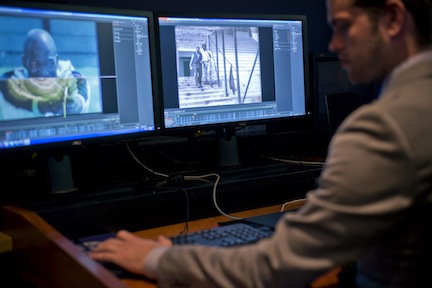
Gravel Road’s Jonathon Joubert works on color correction; photo: Patrick Ryan
Further impeding local sales has been that “our audience doesn’t have access to cinemas, and if people do, they’d rather go to Hollywoood, or get pirated films.”
The challenge is all the greater because Gravel Road doesn’t have access to classic Afrikaans-language films, which appeal to a sector of South African society that still has the bulk of disposable income. If it did, “I’m sure there’d be a phenomenal response,” Cowley says. But a major broadcaster bought up the rights to almost all those historic films, and appears to be sitting on them, so “we’ve restored only one Afrikaans film that we managed to get the rights to,” Trompie, Cowley says.
Some B-Scheme veterans fared well in post-apartheid South Africa, but many others joined the ranks of the impoverished and unemployed. Even among B-Scheme veterans who have done well financially in subsequent careers tend not to talk about it, Cowley says: “When you talk to them about these films, most say ‘I haven’t even told my family that I used to do this’.”
Reasons for this include the obvious – the social devastations of apartheid were such that many film makers and actors of the B-Scheme era fared ill, with its passing. “Some are just roaming the streets, and don’t have careers or jobs,” Cowley says. He hopes that providing them exposure for their film exploits will help.
The way the scheme ended also has contributed. The scheme fell into disrepute due to corruption in its administration and operation. With little government oversight, and few formal cinemas, some of the recipients of B-Scheme funding inflated or simply made up attendance figures, on which funding levels were based.
“It was widely abused,” says Cowley. “Some distributors, not so much producers, would play with the numbers: They would say 1,000 people came to watch the film at this or that location, and when the investigators went there, there wasn’t even a cinema or building there.”

Tonie Van Der Merwe used his own factory’s machinery and plowed disused plant (top left), all in the cause of films funded by the B-Scheme, whose output (above) was surprising and a little over the top.
Some filmmakers recycled films under different titles and claimed separate subsidies for those. In 1989, the Department of Home Affairs took over the reins of the program, stumbled on the fraud, and launched a major investigation. It could not — or did not — prosecute any film-maker or production company, nor recoup any falsely claimed monies. But, says Cowley, “going through that experience left a bitter taste.”
Still, he remains upbeat about the scheme: “Things can come full circle. People are now starting to realize some good came out of it.”
next: all of Africa
Cowley also hopes that Gravel Road’s revival of the B-Scheme films is just the start of a grander project of reclamation of African cinemas — that it will expand to include the forgotten, lost, or neglected film histories of other African nations. He says: “We’re on a constant search for more movies, hoping that once we get through the South African films, we can start to go through archives in the rest of Africa,” especially in Francophone countries such as Senegal where film has a particularly rich history due in good part of French government funding and patronage.
Egypt has a film history as long as virtually any country, and plenty of African nations have more modest ones, including Kenya. Zimbabwe’s industry was at one time larger than South Africa’s – during its colonial era, as Rhodesia, when film there was subjected to political propaganda forces, too.
When the time does come for expansion of Retro Afrika Bioscope, post-colonial sensibilities are sure to pose obstacles, Cowley has no doubt: “It’s very sensitive.” Archives in those countries “are very wary of people from other countries coming in and trying to take their national assets.”
But time is of the essence, if film patrimonies around Africa are to be preserved, he says: “From what I’ve been told, some of those are in dire condition.”
– Peter Monaghan
Previous Post: Why Deny Film to People in Prisons?
Next Post: Fifty-Seven Films Guaranteed Survival


